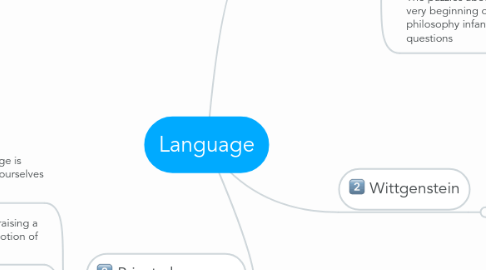Language
by Anna Bromely

1. Private language
1.1. Language and meaning depend on a community of understanding, therefore the notion of a private language is unintelligible even to its 'inventor'. We can't live inside ourselves - we have to engage communicatively with others.
1.2. Kripke understands Wittgenstein as raising a sceptical problem about the whole notion of meaning.
1.3. Mulhall posits 2 ways of reading Wittgenstein: substantial and resolute. Substantial is the ability to distinguish sense from nonsense even requires a philosophical understanding. The resolute relates to our competence in grammar.
1.4. The existence of rules governing the use of language shows an agreement of people of a pre-condition of language and concept-formation.
2. Speaking
2.1. Philosophy of language is the relationship between word and object and language and the world
2.2. Words are signs - speaking is giving signs. Every sign indicates something (Don't waste words - Stoicism, philosophy of endurance)
2.3. A word in a foreign tongue may fail to signify
2.4. The puzzles about language is what philosophy is from the very beginning of conscience. But does that make philosophy infantile? No, it's about interpreting first questions
3. Wittgenstein
3.1. Backed and then rejected a 'picture theory' of language
3.2. Wittgenstein has the notion of the rootedness of ideas. The picture is the soil from which the idea grows, the idea is second to the picture. This picturing (expressed in words) needs to be going on to allow for growth. From a rather modest start, astonishing achievements can be brought about.
3.3. But what is a picture? A picture is a pre-theoretical framework or orientation - echoes the guiding thoughts or Heidegger that there can be no questions without a grasp of what it is that is in the question. Paradox of enquiry - In order to begin you must know what needs to be done.


